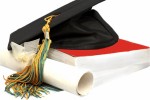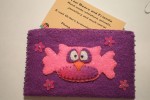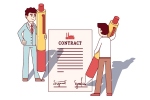![153626054b[1]](https://www.ajnnews.com/wp-content/uploads/2013/11/153626054b1.jpg) Dedicated teachers are always on the lookout for fresh instructional strategies to use in math, science, English and history lessons. Regardless of the subject, they want to create clear lesson plans so that all of their students can thoroughly absorb the information. In addition to teaching these basic subjects, many teachers want to help their students to develop critical thinking skills. Besides being helpful on a standardized test, critical thinking skills can be of value to students after they graduate. Here are some examples.
Dedicated teachers are always on the lookout for fresh instructional strategies to use in math, science, English and history lessons. Regardless of the subject, they want to create clear lesson plans so that all of their students can thoroughly absorb the information. In addition to teaching these basic subjects, many teachers want to help their students to develop critical thinking skills. Besides being helpful on a standardized test, critical thinking skills can be of value to students after they graduate. Here are some examples.
Evaluating Evidence
First, a student who learns critical thinking skills knows how to evaluate evidence and come to a logical conclusion. A dedicated teacher wants to give students the tools to figure out a problem on their own instead of simply asking them to memorize the problem and the answer. A student who memorizes a bunch of questions and answers will not be likely to remember that information after the day they take a test on that information.
Independent Thinking
Another benefit of learning critical thinking skills is a student doesn’t have to accept another person’s solution to a problem or even their interpretation of the problem. A student with critical thinking skills is able to come to a solution to the problem using his or her own brainpower. Teachers want their students to rely on their own talents for coming up with logical answers.
Finally, teachers can find guidance instructional strategies in the area of teaching critical thinking skills on a website such as MentoringMinds.
For a decade, Mentoring Minds has been working with educators to give children the skills they need to succeed – in class, on tests, and for life. Through full range of K-12 education tools, Help to incorporate the critical thinking and lifelong learning skills needed in the 21st-century marketplace.
The former educator’s product development team creates every new supplemental resource, teaching aid, and learning tool by first asking simple questions: What do classroom teachers need to make sure every child masters this material? How can children apply their knowledge in new situations? The team then designs products to fill in the gaps between traditional textbooks and the new skills children are expected to master at each grade level.
Every day, work with thousands of schools and districts across the nation, helping create classrooms where children learn how to problem-solve and where teachers are confident in their ability to help each student.























